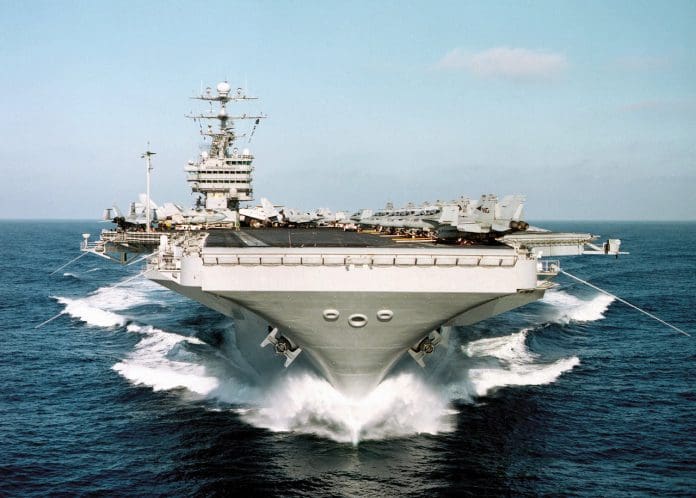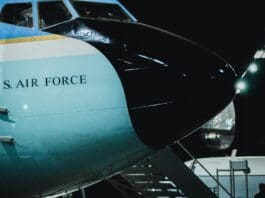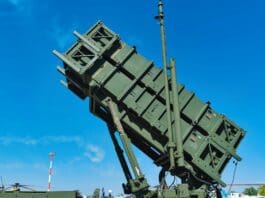This post is also available in:
 עברית (Hebrew)
עברית (Hebrew)
Claims of a new technique for collecting naval intelligence that was developed by Chinese researchers are making waves: using low resolution, publicly available satellite imagery, the team states they were able to detect U.S. warships that would otherwise be undetectable with ordinary, open-source tools.
As reported on Interesting Engineering, the team, led by Hong Jun from the Dalian Naval Academy, developed an algorithm that was able to track a U.S. Nimitz-class aircraft carrier and other significant warships, despite using imagery that had resolution of tens or hundreds of meters, which would make such a large vessel tiny in an image. The team’s method focuses on the way different vessels create different wave patterns, and that these patterns are unique to the ship that creates them. As a vessel’s wave pattern (wake) can stretch for tens of kilometers, the team could utilize even low-resolution imagery to identify these ships. Their study, published in April in Computer Simulation, outlines the physical parameters necessary for accurate identification of specific ship models.
Although ships’ wakes can extend tens of kilometers, extracting useful data from these satellite images can be challenging due to environmental noise like clouds and waves, which can hide key features in the ship’s unique wake. Therefore, this was one major challenge the team had to overcome.
While naval forces have used similar wake-tracking techniques for decades, China’s approach stands out for utilizing low-resolution images, which is relatively novel. However, this method is limited by the availability of real-time imagery, and it struggles with fast-moving targets, something the team sets out to improve upon.
China, which likely has vast intelligence collecting capabilities, including an extensive network of satellites, probably does not need to get naval intelligence from low-resolution, open-source imagery. However, the method could be valuable for countries with fewer satellite resources.




